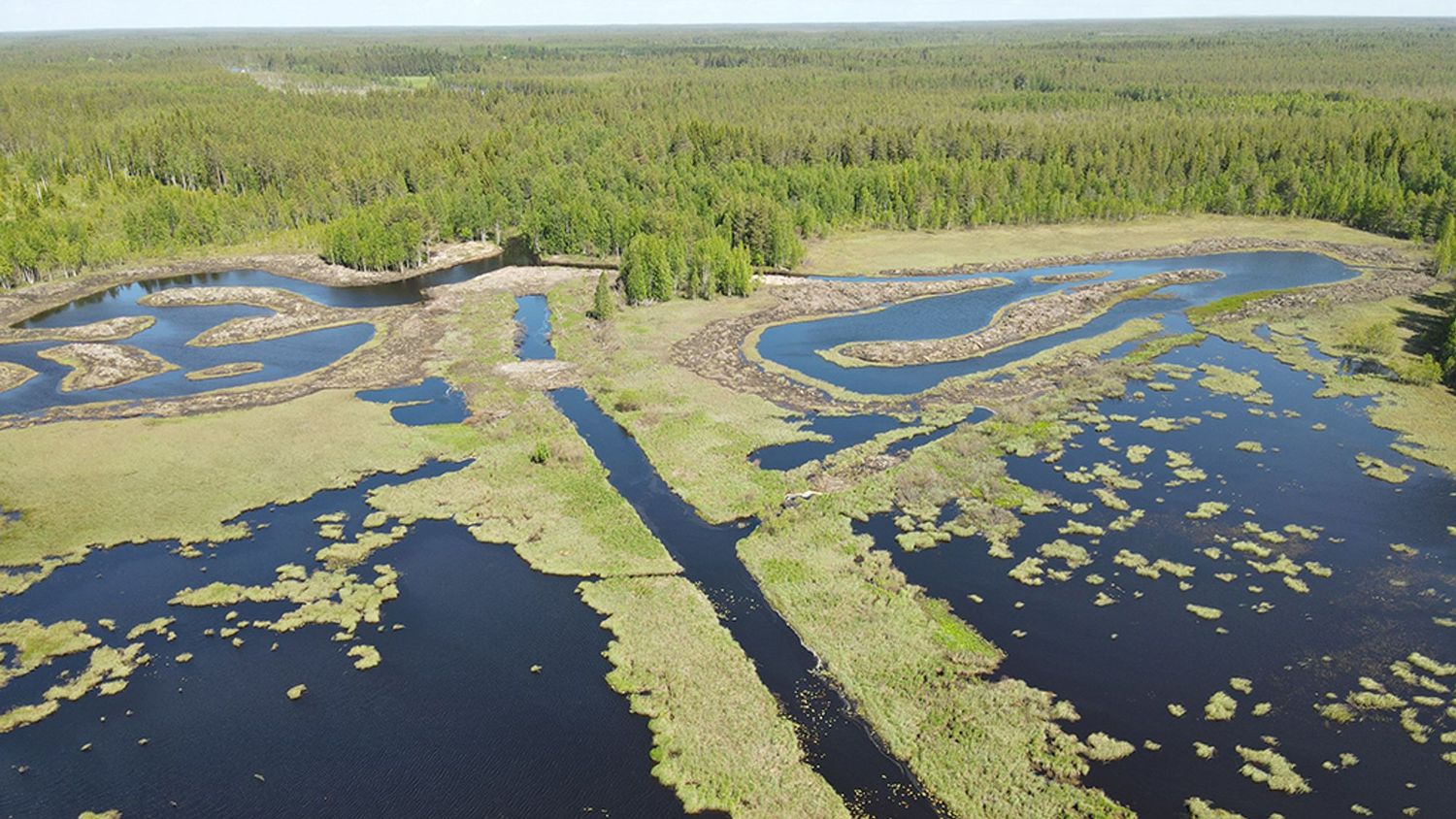Our WaterLANDS partners from the Geological Survey of Finland (GTK), have published a new policy brief on peatland restoration in Finland, which highlights the policy impact being made beyond our WaterLANDS Action Sites.
The policy brief "Restoring Peatlands on Private Land Requires Incentives and Local Engagement" is based on interviews with Finnish restoration actors and identifies key barriers and proposed measures to accelerate peatland restoration in Finland—highlighting the need for stronger incentives, clear operational models, and local cooperation.
Background
To meet the EU regulation’s requirements, Finland must significantly increase the scale of peatland restoration—both in terms of speed and land area—on state and private lands alike. The goal is to halt biodiversity loss, prevent the degradation of water systems, and mitigate climate change.
Large-scale restoration efforts at the landscape or catchment area level would enhance the effectiveness and impact of the restoration actions. However, this demands more diverse strategies for organizing and supporting restoration efforts than those used thus far.
GTK’s new policy brief outlines key measures to expand peatland restoration in Finland.
New models needed for peatland restoration on private land
Until recently, peatland restoration in Finland has primarily focused on state-owned conservation areas, particularly on forest-drained peatlands. However, restoration efforts on private land are now gaining momentum.
Collaborating with local communities is essential for success. Effective restoration requires regional knowledge, social acceptance, and cooperation. Local communities are ready to engage if they perceive the initiatives as fair and beneficial.
Currently, public support schemes offer insufficient incentives for private landowners to pursue restoration. To involve more private land, restoration must be made a competitive land use option. Incentives could be strengthened by combining state subsidies with private funding.
Even when willing to restore, landowners often lack the capacity to initiate projects independently due to fragmented land ownership and the complex coordination these efforts require. Intermediary actors are needed to bring landowners together, develop restoration plans, and secure funding.
A clear commitment to peatland restoration
Stakeholders in restoration and conservation share a vision of what effective peatland protection and restoration requires. Large-scale efforts on private land will only succeed if the state commits to supportive and effective policy instruments.
Existing obstacles—such as gaps in incentive systems, restrictive legal frameworks, and the lack of local ownership—can be overcome if all relevant actors work toward a common goal. Local communities, landowners, businesses, and funders above all need a clear message: peatland restoration is the land use of the future, and the state is committed to supporting it over the long term.
